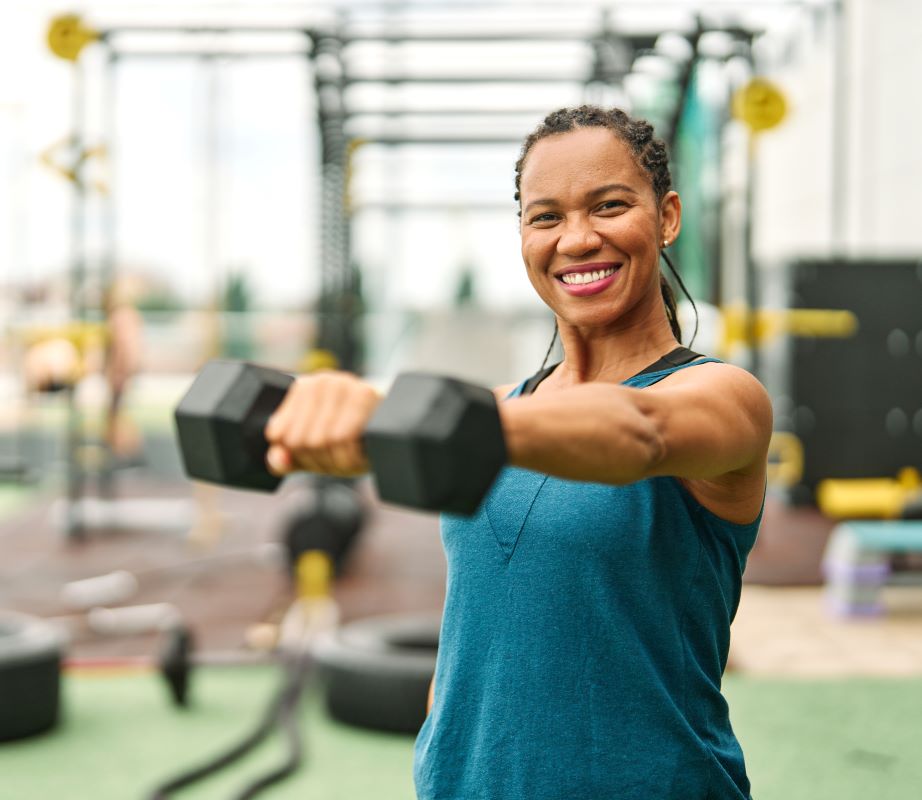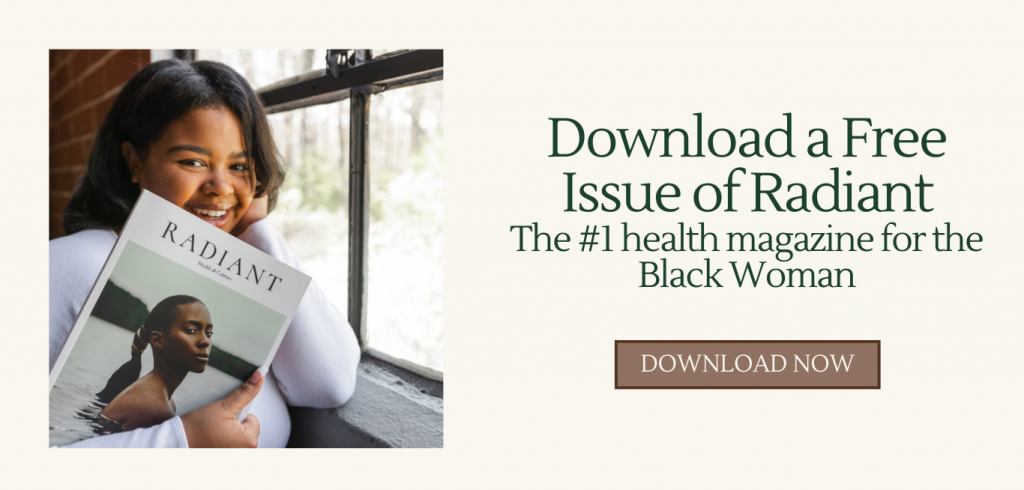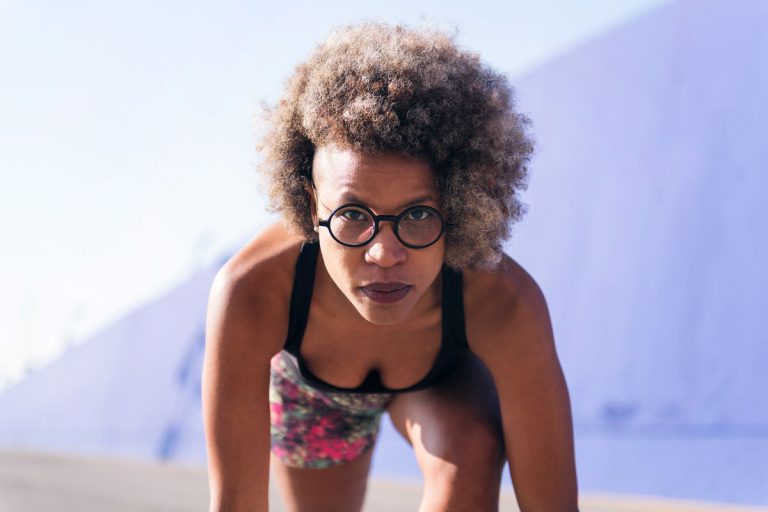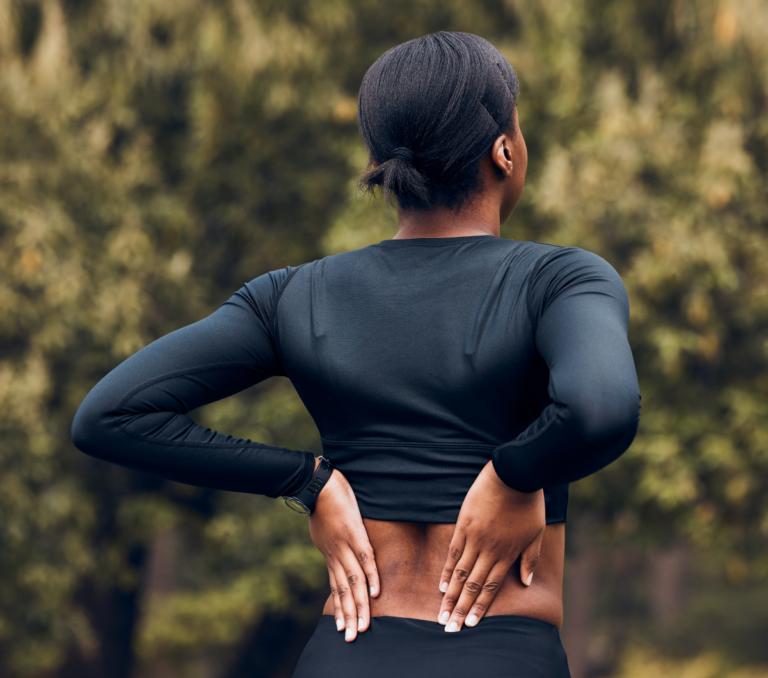Workouts for Women Over 40: A Comprehensive Home-Based Strength and Cardio Plan
Effective, home-based workouts for women over 40 blend strength and cardio to boost fitness, vitality, and long-term health.

For women over 40, staying fit means adapting to a changing body with smart exercise routines. This guide outlines workouts for women over 40 that combine strength and cardio, helping you overcome common barriers and maintain lasting vitality.
Exercise is good for everybody’s body. And yet, despite this, many women in their 40s avoid it or follow workouts that don’t match their needs and goals. That’s because a lot of mainstream fitness information is aimed at younger people or men, especially those interested in bodybuilding.
Influencers are often more interested in posting amazing pictures and cool videos than in providing usable guidance. If anything, such content can be demotivating, resulting in self-doubt and thoughts of fitness inadequacy.
That’s a shame because, done right, exercise is incredibly valuable to women in their 40s and can have a huge impact on how you look, feel, and function.
While it’s beyond the scope to explore all the benefits of exercise, a few selected highlights include:
- Avoid middle-age weight gain
- Lower your risk of developing osteoporosis
- Preserve or improve your functional fitness and strength
- Prevent age-related muscle loss
- Manage menopause symptoms
- Better joint health
- Lower your risk of developing age-related medical conditions
Of course, despite the many benefits, adding exercise to an already busy schedule is not always easy. There are numerous barriers to working out regularly, many of which can seem impossible to overcome. Lack of time and facilities are two of the most common reasons for not working out.
The good news is that you don’t have to spend hours in a gym or have access to state-of-the-art equipment to get fit and healthy.
In fact, all you really need is a few hours per week, some space, and a few basic items such as an exercise mat, resistance bands, and light dumbbells.
In this article, we share a home-based workout plan designed for women in their 40s.
Weekly Plan
Your fitness improves according to the activities you do. This is called the specificity principle. As a woman in your 40s, you need to develop a wide range of fitness components, including strength, balance, mobility, flexibility, and cardiovascular endurance.
While yoga is great for developing balance and flexibility, it’s less useful for strength. In contrast, where jogging or running is good for your heart and lungs, it’s not effective for improving your mobility. Consequently, your program should include a range of activities that challenge and develop all aspects of your fitness.
With that in mind, here is your weekly plan. Please note that you can change the days on which you perform your workouts, and the AM/PM designations are only suggestions.
| Monday | Tuesday | Wednesday | Thursday | Friday | Saturday | Sunday | |
| AM | LISS Cardio | Strength Circuit | HIIT Cardio | Mobility & Flexibility | Strength Circuit | LISS Cardio | Mobility & Flexibility |
| PM* | Walk | Walk | Walk | Walk | Walk | Walk | Walk |
*Try to walk a total of at least 5,000 and up to 10,000 steps per day in addition to your workouts. Regular walking has been shown to have many physical and mental health benefits. You don’t need to do all your walking in one go. You’ll probably find it easier to accumulate your steps if you spread them throughout the day.
Related Articles
Workouts
While you are free to create your own workouts, here are some examples of what to do each day. However, please adjust the suggested durations, sets, reps, etc., to reflect your current fitness. Each workout should be moderately challenging, but leave you feeling energized and not drained!
Warm-Up
Every good workout starts with a warm-up. Warming up helps ease your transition from sedentarism to exercise, preparing your body and mind for what follows. It may also lower your risk of injury.
You don’t need to spend a lot of time warming up, but you shouldn’t rush it, either. Ten minutes should be sufficient for most people.
Follow these simple steps before attempting any of the following workouts:
- 5-8 minutes of easy cardio, speeding up gradually, e.g., walk -> jog -> run.
- Mobility exercises for main joints, e.g., shoulder rolls, side bends, shallow squats.
- Dynamic flexibility exercises for major muscles, e.g., leg swings, deep knee bends, and hip hinges.
Cool-Down
What goes up must come down, and that includes your body temperature and heart and breathing rate. Cooling down returns your body to its pre-exercise state, speeds up recovery, and may prevent muscle soreness.
All you need to do for your cool-down is:
- 5-8 minutes of easy cardio, slowing down gradually, e.g., run -> jog -> walk.
- Static flexibility exercises for all major muscles, e.g., seated hamstring stretch, standing quads stretch, prone cobra stretch, etc.
LISS Cardio
LISS stands for low-intensity steady state and is a form of easy-paced cardio usually done for at least 20 minutes without stopping. It’s good for your heart, lungs, and circulatory system, as well as being an effective fat burner.
LISS has become less popular since the rise of interval training and other high-intensity exercise methods. However, it’s actually one of the most powerful types of exercise you can do for health and longevity.
To do an LISS workout, pick a form of cardio that you can do for 20-40 minutes at a moderate speed without stopping. On an intensity scale of 1-10 (easy to VERY hard), you should be at around 5-6. You should able to maintain a conversation, albeit with regular pauses for breath.
Good LISS activities include:
- Brisk walking
- Jogging
- Running
- Dancing
- Swimming
- Cycling
- Rowing
- Elliptical trainer
- Group exercise (aerobics) class

Strength Circuit
Women are often wary of strength training, imagining that it will make them muscular and masculine. This concern is unfounded as women don’t have the muscle-building hormones to get big and bulky.
Instead, strength training will increase bone density, make many of life’s demanding activities easier, enhance joint health, and tone and firm your muscles. It’s also good for your balance and is an effective way to boost your metabolism and control your blood glucose.
In short, strength training is big medicine, and should be part of every woman’s workout schedule!
This workout is designed to performed done as a circuit, meaning you do each exercise in turn, resting only after completing the final movement. This approach improves your fitness and burns more calories than conventional strength training.
Regarding weight, use as much as you need to fatigue your muscles within the prescribed rep range. The last couple of reps should be challenging, but your form should not change.
| Exercise | Reps | Laps | Recovery | |
| 1 | Air squat | 15-20 | 2-5 laps depending on your fitness and time available | Take 10-15 seconds between exercises, and 1-2 minutes between laps |
| 2 | Push-up* | 8-10 | ||
| 3 | Dumbbell row | 8-10 | ||
| 4 | Lateral lunge | 10-12 per side | ||
| 5 | Dumbbell press | 10-12 | ||
| 6 | Band pulldown | 10-12 | ||
| 7 | Hip thrust | 15-20 | ||
| 8 | Dead bug | 10-12 per side |
*Do your push-ups on your toes or knees as preferred.
HIIT Cardio
Where LISS is a slow and steady workout, HIIT is altogether faster. Short for high-intensity interval training, HIIT develops your high-end fitness, improves cardiovascular power, and burns calories like a furnace. However, it’s also a relatively short workout, and even with your warm-up and cool-down, it should be over and done in about 30 minutes.
For your HIIT workout, pick a form of cardio that allows you to alternate between a slow pace and a fast “sprint.” Exercise machines are ideal, e.g., treadmill, bike, rower, etc., but you can also jump rope or alternate between walking and running outside.
Once you’ve picked your activity and warmed up, perform the following:
- Slow, easy pace – 90 seconds
- Sprint – 30 seconds
- Repeat for 6-10 sets depending on fitness and time available
Mobility & Flexibility
Today’s workout is all about rest and recovery while improving muscle elasticity and joint health. Follow a simple yoga flow for 15-20 minutes or start at the top of your body and work down, gently stretching each major muscle in turn. Spend longer on anything that feels particularly tight.
Strength Circuit
Repeat the previous strength circuit or mix up the exercises if you prefer. Try to work a little harder (more reps, more weight) from one week to the next, but never at the expense of good exercise form.
LISS Cardio
Repeat Monday’s workout but consider using a different type of exercise. For example, if you ran on Monday, why not try rowing or cycling today? This variety will help keep your workouts fresh and interesting while reducing your risk of overuse injuries.
Gradually increase speed and duration as you get fitter but remember this is a low to moderate-intensity workout, so you don’t have to push yourself too hard.
Mobility & Flexibility
Repeat your yoga flow or stretching routine from last time. Remember this is supposed to be an easy active recovery session, so don’t make it too long or intense. However, don’t skip it either, because mobility and flexibility are critical to your fitness and health.
Nutritional Considerations for Female Exercisers Over 40
Exercise and nutrition are two sides of the same coin and you’ll enjoy better results from both if you combine them.
It’s like 1 + 1 = 5!
Like the world of exercise, nutrition is a big and often confusing subject with many self-proclaimed experts promising to reveal the secret to easy weight management and vibrant health.
However, the REAL secret is that nutrition doesn’t have to be complicated to be effective, and food is meant to be enjoyed. Restrictive, faddy diets are unpleasant and ineffective, and sustainability is the key to your dietary success. After all, what’s the point of dieting hard to lose weight if you regain it when you go back to “normal eating?”
So, rather than provide you with a diet to follow, here are some guidelines for creating your own sustainable eating plan:
1| Adjust meal size according to your goals. You don’t need to count calories to manage your weight, although you can if you want to. Instead, reduce the size of your meals if you want to lose weight, or increase portion size if you want to gain weight. Weigh yourself weekly and adjust the size of your meals accordingly.
2| Prioritize protein. Protein is filling, boosts your metabolism, and promotes recovery after exercise. It also helps preserve your muscle mass. Good protein sources include lean meat, fish, poultry, eggs, dairy, nuts, beans, soy, lentils, chickpeas, quinoa, tofu, tempeh, edamame, and peas. Try to include a source of protein at every meal, and use it in your snacks, too.
3| Fill up on veggies. Vegetables are a nutritional superfood and are packed with essential vitamins, minerals, and fiber. They’re filling and naturally low in calories, so you can consume large portions without worrying about weight gain. Try to include 2-3 different veggies in every meal; your body will thank you!
4| Add some healthy fats (in moderation). Fats are often labeled as unhealthy, and some are. Hydrogenated and trans fats have been chemically altered, making them reactive and bad for your health. In contrast, natural fats such as olive oil, real butter, avocado oil, coconut oil, nuts, seeds, and oily fish are much better for you and offer numerous benefits.
Fats are high in calories, so don’t overdo it. However, including moderate amounts in your diet can help regulate your hormones, improve heart health, and reduce inflammation.
5| Cut down on refined foods. White bread, rice, pasta, pastries, candy, and reconstituted meats are high in calories, often contain unhealthy additives, and are low in fiber, vitamins, and minerals. While you don’t have to eliminate refined foods from your diet, the less you eat the better you’ll feel and look.
Instead, fill your plate with unrefined foods, such as whole grains, fruit, vegetables, and plain meat and fish, which are generally more nutritious, more filling, and less calorific.
6| Minimize sugar intake. While a little sugar won’t hurt you, too much can be very harmful to both your health and your waistline. Sugar is hidden in a lot of foods to make them addictive, so you’ll have to become a sugar detective to reduce your intake. It’ll be worth it, though, as consuming less sugar will have a big impact on everything from your weight to your mood to your energy levels.
7| Prepare more of your own meals. Takeout and restaurant meals are getting bigger, and so are the people who eat them! The easiest way to avoid eating more than you should is to prepare your own meals in sensible-sized portions.
This doesn’t have to be time-consuming, and things like slow cookers, soup makers, and air-fryers can do much of the work for you. In many cases, you can prepare and cook a healthy meal in 30-40 minutes, especially if you keep things simple, e.g., pan-roasted veggies with grilled fish.
8| Avoid drinking your calories. You can drink far more calories than you can eat as fluids are much less filling than solids. For example, you might have a sugary, creamy coffee and still want a cookie, consuming as many calories as a regular-sized meal. Not drinking your calories means you can enjoy more food while still managing your weight.
Water with lemon juice, black tea and coffee, and herbal or fruit infusions are all low in or free from calories and better for you than most sodas, fruit juices, smoothies, and sweetened tea and coffee-based drinks.
Conclusion
Exercise and healthy eating can have a transformative effect on your health, appearance, and how you feel. They may even help you live longer.
However, you don’t need extreme diets or ultra-intense workouts that you can only follow for a week or two. Instead, to get the most from diet and exercise, you need to do them consistently.
As a woman in your 40s, you need to make healthy eating and exercise part of your lifestyle. The longer you do them, the more rewarding they’ll be.
The good news is that you don’t have to spend hours in the gym or the kitchen; short frequent workouts and simple homemade meals will deliver the results you want.
So, don’t believe the diet and exercise hype, and remember that if something sounds too good to be true, it probably is.
Invariably, when it comes to exercise and diet, the simplest approaches are best.





